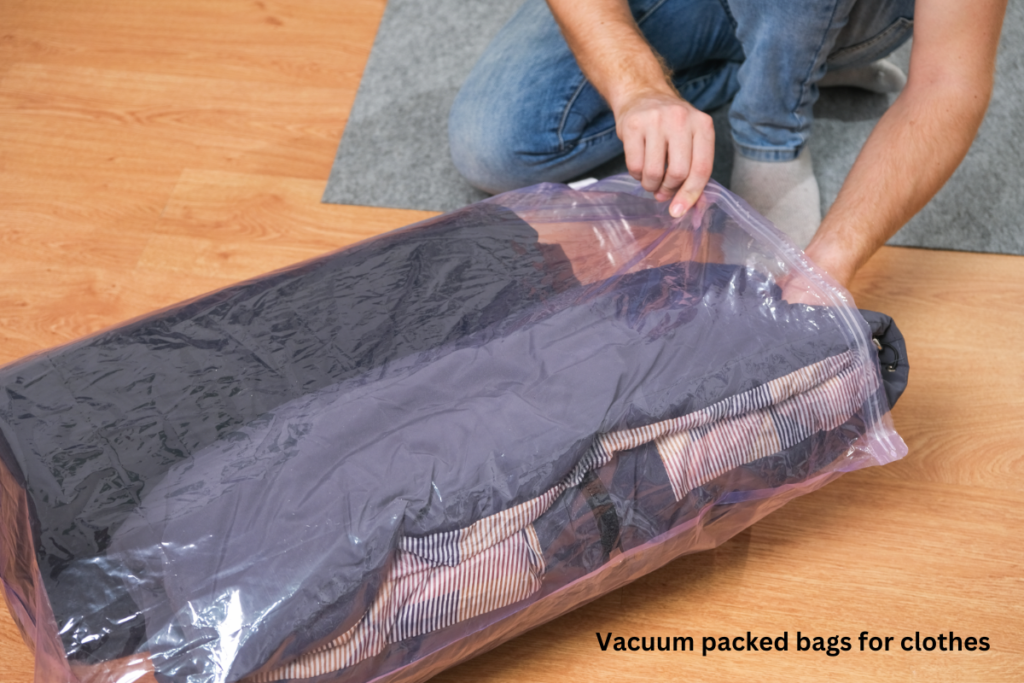Moving clothes from one place to another might seem easy, but when dealing with a large wardrobe, it can quickly become overwhelming. Whether you’re relocating to a new home or shifting your wardrobe to storage, planning ahead is essential. These tips for moving large amounts of clothes will help you stay organised, protect your clothing, and make the entire process stress-free.
In this article, we’ll cover effective packing methods, safe transportation techniques, and additional steps to simplify the move. Follow these tips for moving large amounts of clothes to keep your wardrobe intact and manageable.
Key Tips for Moving Large Amounts of Clothes
Moving a large wardrobe requires strategy. Without proper organisation, clothes can get wrinkled, misplaced, or even damaged. A structured approach ensures that unpacking is just as easy as packing. Whether you are dealing with everyday outfits or expensive formal wear, these key tips for moving large amounts of clothes will help you get everything from one place to another efficiently.
1. Sort and Declutter Before Packing
Before you start packing, take the time to go through your wardrobe. Moving is the perfect opportunity to get rid of clothes you no longer wear. Reducing the load not only makes the move easier but also saves space in your new home.
- Set aside clothes you haven’t worn in the past year.
- Donate or sell items in good condition to reduce clutter.
- Discard damaged or worn-out clothing responsibly.
2. Use Wardrobe Boxes for Hanging Clothes

Amazon Basics Wardrobe boxes are an excellent way to move hanging clothes without having to take them off their hangers. These tall, sturdy boxes keep your clothes neat, preventing wrinkles and damage during the move.
- Ideal for delicate clothing like suits, dresses, and blouses.
- Reduces the hassle of ironing clothes after the move.
- Makes unpacking easier as you can hang clothes directly in your new closet.
- Keeps clothing protected from dust and moisture.
3. Pack Seasonal Clothes Separately
If you’re moving during a specific season, chances are you won’t need all your clothes immediately. Packing seasonal clothes separately ensures you won’t have to go through unnecessary items right away.
- Label boxes clearly to identify winter or summer clothes.
- Store seasonal items in airtight containers for added protection.
- Keep frequently used clothing easily accessible.
4. Roll Clothes Instead of Folding
Rolling clothes is a space-saving technique that prevents wrinkles and makes packing more efficient. It works particularly well for t-shirts, jeans, and lightweight fabrics.
- Rolling allows more clothes to fit in a single box or suitcase.
- Helps keep outfits organised and easy to identify.
- Ideal for travel bags and carry-on luggage.
- Reduces the chance of creases on delicate fabrics.
- Great for packing children’s clothes in compact spaces.
5. Use Vacuum-Sealed Bags for Bulky Items

Thick clothing like winter coats, sweaters, and blankets take up too much space if packed loosely. Vacuum-sealed bags for clothing compress them, making storage and transport easier.
- Prevents moisture buildup and protects against pests.
- Creates additional space in moving boxes and luggage.
- Keeps heavy items compact and easier to lift.
- Best suited for non-delicate fabrics that won’t crease.
6. Pack Everyday Wear in Suitcases
Suitcases are designed for carrying clothes, so why not use them when moving? Instead of packing everything into boxes, place frequently used clothes in suitcases for easy access.
- Suitcases are easier to transport than large boxes.
- Provides quick access to essential clothing upon arrival.
- Keeps clothes neatly folded or rolled.
7. Protect Delicate and Expensive Clothing
Delicate fabrics and expensive outfits need extra care while moving. Wrinkles, dust, and damage can ruin high-value clothing, so take precautions when packing.
- Use garment bags to prevent dust and dirt buildup.
- Keep silk, lace, and embellished clothing separate.
- Store high-value clothes in a personal vehicle for added safety.
- Fold delicate fabrics with tissue paper to avoid creasing.
8. Label Everything Clearly
Labeling your boxes makes the unpacking process much easier. Without clear labels, you might find yourself opening every box just to locate one item.
- Use bold markers or printed labels for clarity.
- Separate work clothes from casual and seasonal items.
- Mark boxes containing delicate or high-value clothing.
- Avoid stacking heavy boxes on top of lighter ones.
9. Reinforce Moving Boxes
Since clothes can be heavy, weak boxes might tear during transport. Reinforcing moving boxes ensures they stay intact throughout the journey.
- Double-tape the bottom of boxes to strengthen them.
- Distribute weight evenly to prevent box damage.
- Avoid packing all heavy clothes in one box.
- Use plastic bins for long-term storage to avoid moisture damage.
- Check for any weak spots in cardboard boxes before loading.
10. Plan for Immediate Access
Once you arrive at your new home, you don’t want to go through every box just to find what you need for the next few days. Keep a bag with essential clothing ready.
- Pack pajamas, undergarments, and a few casual outfits separately.
- Keep toiletries and accessories within reach.
- Store work or school clothes in an easily accessible suitcase.
- Avoid overpacking your immediate-use bag to keep it manageable.
Additional Tips to Take Care While Moving Large Amounts of Clothes
When dealing with a significant amount of clothing, small details can make a big difference. Keep these extra tips for moving large amounts of clothes in mind:
- Keep socks and accessories inside shoe to save space.
- Secure zippers and buttons before packing to prevent snags.
- Use trash bags to cover clothes on hangers for a quick packing hack.
- Store shoes separately to prevent dirt from getting onto clothes.
- Avoid plastic bags for long-term storage as they trap moisture.
- Use silica gel packets in boxes to prevent mold and mildew.
- Pack heavier items at the bottom and lighter ones on top.
- Keep an emergency sewing kit handy for any quick repairs.
- Move fragile or high-value outfits separately in hand luggage.
- Schedule unpacking clothes as a priority to prevent wrinkles.
Useful Packaging Items and Tools While Moving Large Amounts of Clothes
Packing a large amounts of clothes requires the right materials to ensure everything stays organised, protected, and easy to transport. Using the appropriate tools not only saves time but also prevents wrinkles, moisture damage, and unnecessary stress during the move. Below are some essential items and tools that can make moving your wardrobe a hassle-free experience.
1. Wardrobe Boxes
Wardrobe boxes are tall, sturdy cartons with built-in metal rods that allow you to move hanging clothes directly from your closet without removing the hangers. They keep garments neat, preventing wrinkles and damage during transport.
Why is it needed?
It ensures that formal and delicate clothes stay wrinkle-free, reducing the need for ironing and making unpacking quick and effortless.
Advantages:
- Keeps clothes hanging and prevents creases.
- Saves time by avoiding the need to rehang garments.
- Protects delicate fabrics from dust and moisture.
- Ideal for suits, dresses, and jackets.
- Makes unpacking more organised and efficient.
2. Vacuum-Sealed Bags
Vacuum-sealed bags compress bulky clothing like coats, sweaters, and blankets by removing air, reducing the space they occupy. These bags are great for packing heavy garments efficiently.
Why is it needed?
It helps maximise space, keeps clothes protected from external elements, and allows for easier stacking inside boxes or suitcases.
Advantages:
- Saves space by shrinking bulky clothes.
- Keeps items free from dust, moisture, and pests.
- Lightweight and easy to store in suitcases.
- Great for seasonal clothing that won’t be used immediately.
3. Suitcases and Duffel Bags
Suitcases and duffel bags are perfect for moving clothes, especially frequently used outfits. They are designed for clothing storage and come with wheels and handles for easy transportation.
Why is it needed?
It provides a convenient and sturdy way to transport clothing without requiring extra boxes, making it ideal for short moves or last-minute packing.
Advantages:
- Keeps frequently used clothes easily accessible.
- Provides better mobility compared to boxes.
- Protects clothing from external damage.
- Reduces the number of moving boxes needed.
- Best suited for packing heavier items like jeans and jackets.
Click here to Check out these amazing Duffle Bags.
4. Garment Bags
Garment bags protect delicate and expensive clothing like suits, dresses, and formal wear. They are lightweight, breathable, and keep clothes free from wrinkles and dust.
Why is it needed?
It helps preserve high-end clothing and delicate fabrics, preventing wrinkles, stains, and exposure to dirt during transport.
Advantages:
- Shields clothes from dust and spills.
- Prevents wrinkles in delicate fabrics.
- Keeps outfits ready to wear after the move.
- Ideal for transporting business or formal attire.
5. Packing Tape and Labels
Packing tape secures moving boxes, preventing accidental openings, while labels help in easy identification of stored clothes, saving time during unpacking.
Why is it needed?
It ensures that boxes stay sealed and organised, reducing confusion and making unpacking a smoother process.
Advantages:
- Prevents boxes from opening during transport.
- Helps categorise clothing for easy unpacking.
- Reduces the risk of losing important items.
- Allows movers to handle fragile clothing with care.
- Works well when color-coding different types of clothes.
6. Plastic Storage Bins
Plastic bins offer a durable and reusable alternative to cardboard boxes, protecting clothes from dust, pests, and moisture while keeping them well-organised.
Why is it needed?
It provides a sturdy, long-term storage solution for clothing, especially for items that need extra protection.
Advantages:
- Stronger and more durable than cardboard boxes.
- Protects clothes from humidity and pests.
- Can be reused for future storage.
- Stackable for better organisation.
- Ideal for packing shoes and accessories along with clothes.
7. Trash Bags for Quick Packing
Trash bags offer a fast and cost-effective way to pack clothes, especially for casual and everyday wear. They can also be used to protect hanging clothes.
Why is it needed?
It provides a budget-friendly and flexible packing solution for large volumes of clothes, especially during short-distance moves.
Advantages:
- Quick and easy to pack soft clothes.
- Can be used to cover clothes on hangers.
- Lightweight and easy to transport.
- Fits easily into tight spaces in moving trucks.
8. Silica Gel Packets
Silica gel packets absorb moisture, preventing mold and mildew from developing inside packed clothing. They are small but highly effective in keeping clothes fresh.
Why it is needed?
It prevents moisture-related damage, especially when moving in humid conditions or storing clothes for an extended period.
Advantages:
- Protects clothes from moisture damage.
- Prevents musty odors in packed clothing.
- Helps maintain the freshness of fabrics.
- Small and easy to place inside any packing container.
- Ideal for sensitive fabrics and leather garments.
Summing it up
Having the right items and tools while moving large amounts of clothes can make the entire process smoother and more organised. Using these essentials ensures your clothes stay clean, wrinkle-free, and easy to unpack at your new home.
Would you add any other must-have tools for moving clothes? – Share your thoughts in the comments!





